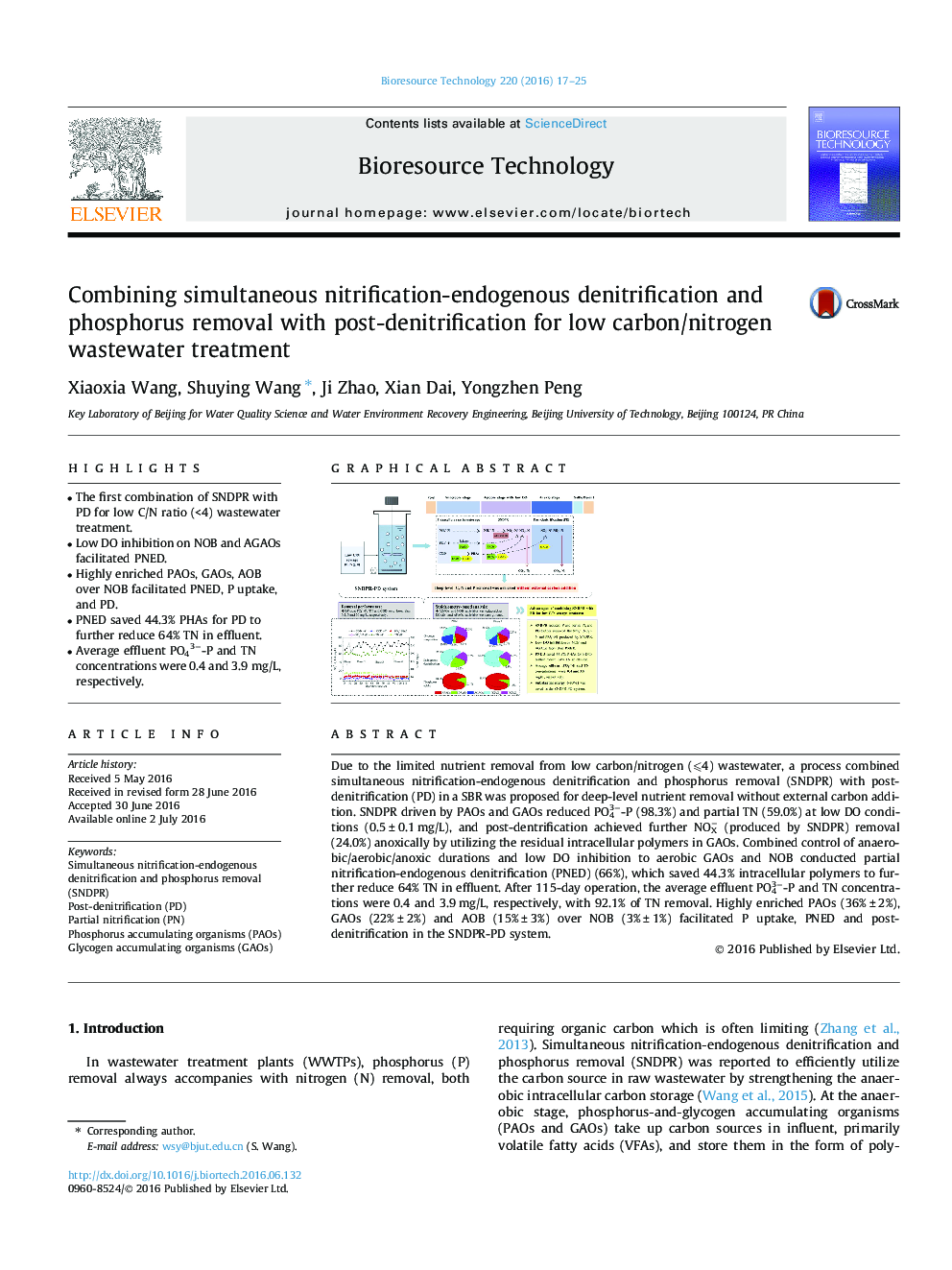| کد مقاله | کد نشریه | سال انتشار | مقاله انگلیسی | نسخه تمام متن |
|---|---|---|---|---|
| 679002 | 1459923 | 2016 | 9 صفحه PDF | دانلود رایگان |
• The first combination of SNDPR with PD for low C/N ratio (<4) wastewater treatment.
• Low DO inhibition on NOB and AGAOs facilitated PNED.
• Highly enriched PAOs, GAOs, AOB over NOB facilitated PNED, P uptake, and PD.
• PNED saved 44.3% PHAs for PD to further reduce 64% TN in effluent.
• Average effluent PO43−-P and TN concentrations were 0.4 and 3.9 mg/L, respectively.
Due to the limited nutrient removal from low carbon/nitrogen (⩽4) wastewater, a process combined simultaneous nitrification-endogenous denitrification and phosphorus removal (SNDPR) with post-denitrification (PD) in a SBR was proposed for deep-level nutrient removal without external carbon addition. SNDPR driven by PAOs and GAOs reduced PO43−-P (98.3%) and partial TN (59.0%) at low DO conditions (0.5 ± 0.1 mg/L), and post-dentrification achieved further NOX− (produced by SNDPR) removal (24.0%) anoxically by utilizing the residual intracellular polymers in GAOs. Combined control of anaerobic/aerobic/anoxic durations and low DO inhibition to aerobic GAOs and NOB conducted partial nitrification-endogenous denitrification (PNED) (66%), which saved 44.3% intracellular polymers to further reduce 64% TN in effluent. After 115-day operation, the average effluent PO43−-P and TN concentrations were 0.4 and 3.9 mg/L, respectively, with 92.1% of TN removal. Highly enriched PAOs (36% ± 2%), GAOs (22% ± 2%) and AOB (15% ± 3%) over NOB (3% ± 1%) facilitated P uptake, PNED and post-denitrification in the SNDPR-PD system.
Figure optionsDownload as PowerPoint slide
Journal: Bioresource Technology - Volume 220, November 2016, Pages 17–25
